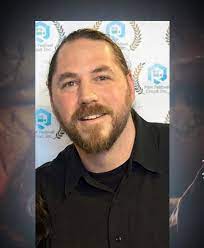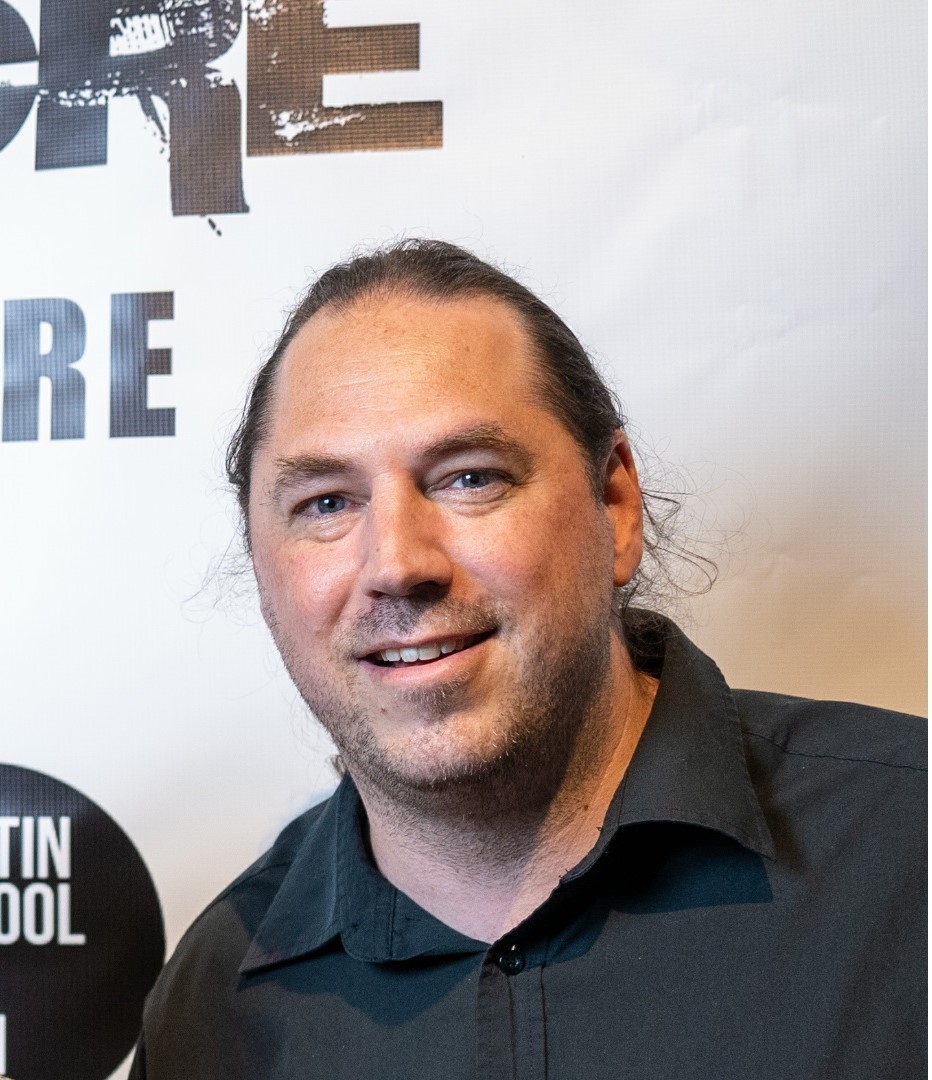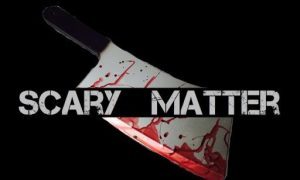
Scary Matter Chats With Director Steve Merlo
Recently I had the pleasure of talking to indie film director Steve Merlo @chainsaw_sawyer. His movie The Sawyer Massacre, an unofficial prequel to The Texas Chainsaw Massacre, was released this October with excellent reviews. I’ve seen it twice, and If you’re a Chainsaw fan, I recommend that you give it a watch. It’s a crowd-funded movie released by Steve’s production company, Sequanda Films. Steve was kind enough to discuss the project with me.

Scary Matter: So tell me, why Chainsaw as opposed to another franchise?
Steve Merlo: The original Chainsaw is my favorite movie. I was never really a filmmaker, I used to be a musician for quite a number of years. It was one of those things that I fell into. Chainsaw was really the film that compelled me to become a filmmaker. When the 2003 remake came out, I was really able to embrace how great the original was. I saw the tv spots, heard John Laroquette’s narration and I thought “Wow! This is gonna be better than the original!” and I went into it with super high expectations. I look at it now and see it’s got some great things going for it, but it’s also got some things that really brought it down for me. I think that’s where my creativity actually stemmed from because it got me thinking about what I would have done differently You can actually see some subtle things in my film that are kind of an homage to the remake. I think the idea really came from me having this bit of disappointment in the remake. Not that I’m saying my film was better – of course, it’s not. Our movie definitely suffers from some issues being a low-budget film. I can look at it and say “I wish I had done this differently” or “If I could I would have done that differently.”
SM: I think everybody says that about things they make.
Steve: Pretty much! We’re always our own worst critics, right? When I was in my late 20s I had a story I was thinking about and I tried to turn that into a script A lot of people pushed me to turn the story into a screenplay. I had never done that formatting before, so I had to learn how to format a screenplay properly. It was a lot of trial and error, that’s for sure. I think I was 32 when I made my first film which was a Chainsaw fan film. I think I am going to post it on my YouTube channel. It was terrible but I’m not embarrassed by it. I can look back on it and see that there were a few good things about it. But if you don’t keep learning then you won’t go anywhere. It was what started my filmmaking journey and it has come a whole 180 with The Sawyer Massacre. And it will be interesting to see how people react to First Annual Barbeque when I post it on Youtube.
SM: Did you take any filmmaking classes, or did you just decide “I’m gonna do this”?
Steve: t was more or less “I’m gonna do this”. After I made a few films I felt I needed to learn more. I took a Master Class with Werner Hertzog. Ilike the style of his filmmaking. People wanted me to take a class with Martin Scorsese, but I never identified with his style. I learned that I made some mistakes but also did some things right. He was a big believer in guerilla filmmaking and doing whatever you have to do to get a film made. The one thing I don’t do that he believed in was read a lot of books. Although I do a lot of research reading. I’ve really taken everything else that I learned into practice. I think experience is the best learning tool you can get.
SM: Why did you film in Texas? Was it for authenticity or because there weren’t any good locations near you?
Steve: At the time I wanted to film in Texas but I didn’t think there was any way it was going to happen, being from western Canada, but it became a reality. I have never really done much crowdfunding for my early films, I had attempted it but it never really went anywhere.
SM: You worked hard for it, I saw everything you did on Instagram!
Steve: We did ok! Nobody’s more surprised than I am, but at the same time I busted my ass doing it. There’s no one thing that works, you just have to do everything you can. Our first crowdfunding raised about three thousand (American). It was a start, but I knew it wasn’t going to get me to Texas. Then Texas became a reality. It became profitable because more and more investors started coming based on the idea that it was going to be filmed. In Texas. We took in at least 10K or more based on filming in Texas. I didn’t advertise Texas for the purpose of crowdfunding, but that turned out to be really smart marketing especially since the new film was shot in Bulgaria instead of Texas. Everybody was outraged when the new films in the franchise were not filmed in Texas. It was saying something to the fans, and I think that’s why we got as much support as we did.
SM: Tell me about location scouting. How did you go about doing it?
Steve: I have experience in location scouting here in Canada., but it was tough because I couldn’t go to Texas to scout locations. I think one of the things that may have hurt the film was the location scouting. There were other people I used that graciously scouted for me – and thank you to all those that did! I was getting pictures sent to me, and I didn’t have a lot of options. I chose locations that looked ok in pictures and thought we could use them.
SM: Was the gas station a real one?
Steve: Yeah. We wanted to use the original gas station in Bastrop, TX. We were staying in Bastrop but they wouldn’t allow us to use it, I don’t know of a legal reason or what. But the one we used WAS a good location. Grandpa’s house was not quite up to what I envisioned. It didn’t work with some aspects of the script. I had to make a lot of last-minute adjustments in order to make it work. The cabin the boys were staying in and the house where Lorraine and Allison were (which was the same location) – nothing about it matched the script well. The interior did, but not the exterior, We were supposed to have a lot of exterior shots, but ended up cutting most of that. When I scout here in Canada, I take videos and dimensions so that if we have to make any changes it can be done in advance. I felt bad for the actors because we had to shoot in nine days. That’s a feat as it is – but then they have to make last minute changes and still pull it off. One or two takes were all they got for this film. I stand by my cast, I’ll tell you that! They were all amazing to be able to pull off what they did in such a short amount of time.
SM: I thought you did a great job making things look authentic for the time period. Where did you get all the cars in the movie?
Steve: That was tough as far as the budget was concerned. We had people quote us a thousand dollars a day for each car. I was lucky enough to get free vehicles and all I had to pay was gas. We had seven before the first day of shooting. The day before we started, someone with two of the cars had to pull out. Then someone with three of the vehicles wanted us to pick them up instead of delivering them on a trailer, and they only gave us two, but one kept stalling. Then another person dropped out. But I managed to rent one more. The rest was either stock footage or reusing the same cars with different exterior/interior shots.
SM: Tell me about the casting process. Did you choose actors based on auditions or your vision of the characters?
Steve: It was both. I worked with two casting directors, one in Canada and one in Texas. It was months of auditions. It was a long process and I watched over 200 auditions. I had a hard time finding the right people. There were a few last-minute dropouts that had to be recast. I tried to ignore whether or not people had experience and ended up finding a few inexperienced hidden gems!
SM: Were any of your friends or family in the movie?
Steve: No, other than my one-year-old son who is the screaming baby at the end.
SM: What was the biggest problem you encountered during filming besides what you’ve already mentioned?
Steve: I would say the no-shows on the first day of filming. Our transportation coordinator just ghosted us. We ended up with Leatherface driving around picking up all the actors! The weather was a problem too. We filmed in March, but I didn’t realize how cold it gets in Texas then.
SM: Who did the special effects?
Steve: Our original special effects artist had to pull out about a month before shooting. Our new special effects artist was Sergio Guerra of The Darkness Effects. We needed three Leatherface masks. He quickly made the life casts of the actors and just barely had them ready on time. They weren’t exactly what I wanted, but the fact that Sergio pulled it off in a month was amazing! There was a fourth mask but that one was made in Canada by a special effects artist that I usually work with.
SM: I liked the fact that Leatherface wore different masks.
Steve: I think we’re the first movie to have that many. Leatherface wears different masks to take on different personalities. You don’t see that in the movies in the franchise these days. I didn’t want to ignore it. To me, it’s such an important aspect of the film and I didn’t want to just gloss over it. I wanted to respect that.
SM: Were there any effects that you weren’t able to do?
Steve: There were other things, but Sergio was so rushed that he didn’t have time to prepare the types of special effects that you would normally see in this type of movie. He was in Puerto Rico during the beginning of filming and only had a month to prepare. There are definitely parts that I wish looked more authentic, but these things happen when you have to do things on the spot. Especially with a nine-day shooting schedule.
SM: Did you feel pressure to live up to the Sawyer reputation, or were you out to put your own spin on it?
Steve: You know you can’t please everybody, but there is a little pressure to make sure that you don’t screw it up totally. But as a fan of the original and the Sawyers, I didn’t feel that much pressure because I knew where I wanted to go with it. I read the original script, and I hope people that didn’t like the choices I made understand that I made them based on descriptions in the original script. Honestly, I’m surprised at how many compliments I received on my choices.
SM: So what’s next for you?
Steve: I’m going to make a feature-length version of a short film I did. I felt that the short version didn’t get out all the things I wanted to say. It did win some awards and it’s up on my YouTube channel. It’s called Unseen. It’s a psychological thriller.
SM: What would be your opus? The thing you would want to make the most?
Steve: I have a production company called Sequanda Films. I have a story based on things like Star Wars, Lord of the Rings, and video games I played as a kid. I’ve created a fantasy world called Sequandaland. I’ve even written songs about it. The majority of the songs that I’ve written are the stories of Sequandaland. I would love to get to the point where I could make Sequandaland for the big screen.
SM: Steve thank you so much for talking with me! I’m looking forward to seeing what you do next.
Steve: I’m looking forward to the future! Thank you for having me.
